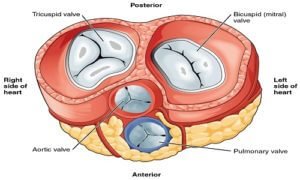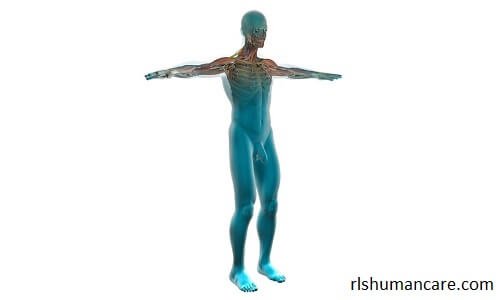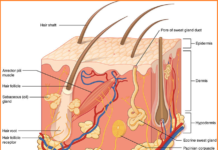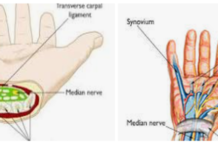Contents
What is Cardiac cycle
It comprises a closed canalicular tar network made up of arteries, capillaries, veins, and a central pumping organ-the heart. Following a cardiac contraction, the blood is distributed to the arteries and them the capillary areas, returning through the veins back to the heart. The arteries and veins are simple transit vessels whereas the capillaries have a functional significance since they are involved in the vital exchange of substances between the blood and the inter-cellular spaces, resulting in important modifications in the blood’s chemical compositor and physical properties. Cardiac work is the quantity of energy that the heart transmits to the volume of blood to propel it through the vessel. This energy has produced the oxidation of organic substances such as glucose, glycogen, lactic acid etc., partially converted to mechanical energy during myocardial contraction.
The heart has four chambers-

left and right atria and left and right ventricles. There is two separate circulation of blood in these compartments. The lesser or pulmonary circulation ion starts at RV and finishes at LA. The greater or systematic circulation starts from LV and finishes at RA. The four cardiac chambers are separated by a system in of valves. The two phase’s the cardiac cycle are diastole and systole. The cycle occurs around 75 times per minute but it may vary depending on age and physiological condition.
The myocardial fiber (strained muscle cell of special structure) has four basic properties to control cardiac function i.e. conductivity, irritability, and contractility.
The stroke volume has an effect on the arterial wall, the tension of which varies depending on blood pressure. Blood pressure is directly proportional to the volume of blood injected per minute (minute volume Vm) and peripheral resistance.
During effort coronary flow increase considerably whereas myocardial oxygen e traction remains largely the same as at rest. Aortic pressure plays a major role in regulating coronary circulation.
When it increases, it raises the flow and vi e versa.
In a normal subject, an average of 90 contractile works is used in the propagation o wave, 25-45% of this works is stored in components, only 10% on average, is not and is probably released during the period of relaxation.
Cardiac insufficiency can be defined as the inability of a myocardial function to ensure output that meets the body’s requirements. The patient in a state of cardiac insufficiency is not capable increase his cardiac work to the same degree. The result is a reduction in contractility. The defective heart does not fully utilize the energy obtained from glucose degradation. The result is a reduction in cardiac output. The predominant symptom is dyspnoea, which results from the increase in respiratory work. Due to reduced cardiac output, fatigue, gastrointestinal disorders and renal dysfunction take puce. This affects the normal functioning of the various organs.
Muscle contraction & Muscular work:
They are explained as under:
(1) Muscle Contraction
There is about 200 skeletal muscles body. Many consists of bundles of muscle which is wrapped – as is the total mi connective tissue in which nerves and blood are embedded. The tissues combine to form that connect ends of the muscle to bones active action a muscle can do is to contract by filaments. Elongation is brought about forces.
This is a complex phenomenon involving many internal human reactions. Muscle fibers (cells) are controlled by a single motor nerve fiber. This is known as the motor unit. An impulse started in a motor nerve cell (motoneuron) propagates along the nerve fiber and transmitted to the motor endplate ate where acetyl chlorine is released. This reverses the resting membrane potential. The neuromuscular transmission transducers electrical signals (nerve impulses) to chemical signals and then back to electrical signals (muscle action potentials.) This initiates the mechanical-chemical mechanisms and causes the muscle to react. In the activated muscle, the contractile components (myofibrils), shorten and stretch the elastic components (connective tissue, tendon). When no movement, the contraction is called isometric (static) and when the muscle is activated to vary its length, the contraction is isotonic (dynamic). In the latter case, external work can be given by the following equation-
Work or energy = force× distance
(Nm or Joule, J) = (Newton) × (metre)
Power = Work per unit time
1 watt (W)
Or 1J/sec = 6.12 kilopond metre per minute
9.81 W = 1 kpm per second
1 HP = 736 W = 75 kpm/sec = 4500 kpm/min
During works performance, a part of mechanical efficiency is dissipated as heat. Thus muscle activation increases heat production which causes perspiration. To prevent overheating during prolonged muscular activity increased local blood flow and increased heat conductance of skin are essential.
(2) Muscular Work:
(A) Factors affecting Muscular Work:
During muscular work physiological functions change from the resting level and heart rate, blood pressure, cardiac output, respiration, pulmonary ventilation, oxygen uptake, carbon dioxide production, chemical composition of blood and urine, body temperature, rate of perspiration, etc. increase. They come back to resting level when the works stop. The period during which the works continues is known as “work cycle” and the period during which the physiological functions return to the resting level is known as “Recovery Period.”
By measuring one or more physiological variables during activity it is possible to determine what degree the working level differs from the resting level. This gives an estimate of the physiological stress experienced in performing a given task. When the activity ceases it is possible to follow the return of the same variables to the resting level and to determine the duration of the recovery period at the end of which the individual has returned to his pre-activity physiological equilibrium. In order to evaluate total physiological expenditure, one must consider physiological reaction both during the work and during the recovery period. A complete work cycle includes the physiological cost of work plus the physiological cost of recovery.
(B) Physiological factors involved in muscular activity are:
- Fuel or combustion – Nutrients e.g. carbohydrates, fat, and protein, their intake and storage.
- Respiratory quotient – The ratio of carbon dioxide produced to the amount of oxygen consumed.
- Role of oxygen – Demand, requirement, supply and oxygen extraction.
- Cardiovascular function – Cardiac output (stroke volume and heart rate), blood pressure.
- Respiration – Tidal air, pulmonary ventilation (air volume exhaled per minute).
- Body temperature.
(C) Physiological reactions involved in muscular work are:
- The intensity of muscular activity – Cardiovascular reactions and aerobic works capacity.
- Age – Aerobic work capacity, heart rate responses, pulmonary ventilation, and blood lactic acid concentration.
- Sex – As stated ‘Age’ above.
- Body build.
- Physical fitness or health – Aerobic capacity, heart rate, and respiration.
- Nutrition – Frequency of meals, nature, and quality of food and digestive power.
- Training – Heart rate, blood pressure, stroke volume, respiratory responses, cardiovascular recovery process, aerobic capacity and lactic acid in the blood.
- Temperature and humidity of the work environment – Cardiac output, recovery heart rate, body temperature, work output, and posture.
- Clothing
Factors responsible for physiological responses to high temperature are:
- Water and salt content of the body.
- Individual characteristics – Age, sex, physical fitness, heat acclimatization and
- Workload
Physiological effects of continuous work in Hot Environment are:
- Cardiovascular stress
- Heart rate
- Cardiac cost
- Blood pressure
- O2 uptake
- Sweat loss
Physiological effects of repeated work cycle in Hot Environment are:
- Heart rate
- Recovery time
- Cardiac cost
- Sweat loss.
Psychic factors affecting muscular (service) functions are attitude and motivation.
Environmental factors that affect are heat, cold, noise, vibration, gas pressure, altitude, air pollution etc.
Nature of work can also affect. It includes intensity, duration, technique, position, and rhythm.
All the above factors – food and nutritional, physiological, environmental, psychic and nature of work actuate service functions that deliver fuel and oxygen to the working muscle fiber. This service function capacity transforms food energy (chemically bound) into mechanical energy for muscular work. This ability of the muscle cell to transform energy actuates ability to perform physical work.
Therefore by paying attention on above factors i.e. giving work according to age and sex, providing rest intervals, reasonable working hours (no overtime), good ventilation, temperature and working conditions, ample drinking water and nutrition, proper clothing, PPE and training etc., good muscular or physical work can be obtained from the workers.
(D) The consequence of Muscular Work:
When muscles work they increase production from about 4 kJ/min (resting level) to 200 kJ/min (max) i.e. about 50 times more. The rate of heat removal, CO2, Water, waste products etc. must also be increased proportionally. To maintain the physical and chemical equilibrium of the cells, a tremendous increase in the exchange of molecules between intra and extracellular fluid is required. Normal pulse rate 60-72 beats/min can rise up-to 220 beats/min, normal oxygen consumption rate 0.2 to 3 litre/min can go up-to 4 litre/min and corresponding energy level rises from 1 kcal/min to @ 20 kcal/min. The energy expenditure, core temperature, sweat rate, skin galvanic resistance, heat stroke volume, and pulmonary ventilation also increase.
To restore the energy content of the body working at maximum capacity up to 4 times more food must be digested, then the individual is at rest. Moreover, during physical work, many of the hormone-producing glands are involved in the regulation of metabolic and circulatory functions of the body.
The energy expended by muscles during work comes from food intake. There are two sources of this energy supply; one is aerobic i.e. direct oxygen intake from air to oxidized food to get energy and the other anaerobic i.e. consuming chemically combined oxygen in the body.
During severe muscular exercise, oxygen demand goes up and up and a stage comes when the body cannot maintain demand and supply. Metabolites like lactic and pyruvic acid get accumulated and the person gets exhausted or feels fatigue. Such physical fatigue, static or dynamic should be removed daily by regular light exercises (Yogasan) and deep breathing in fresh cool air (in the early morning).






sir since a week faceing trouble to watch diz site..
What problem you face?, please describe.
What problem you facing??